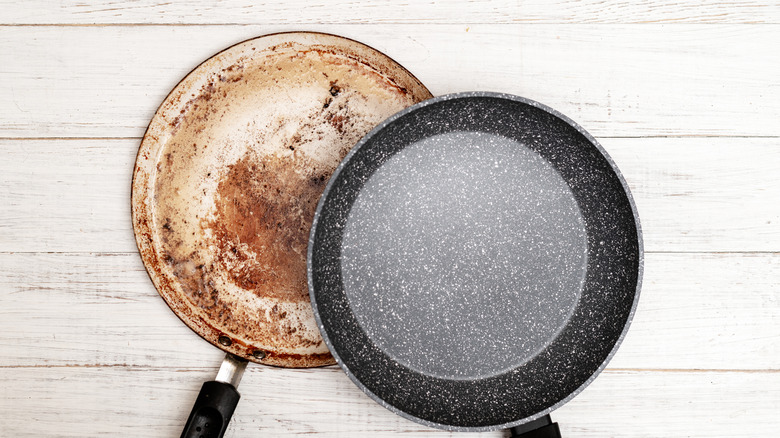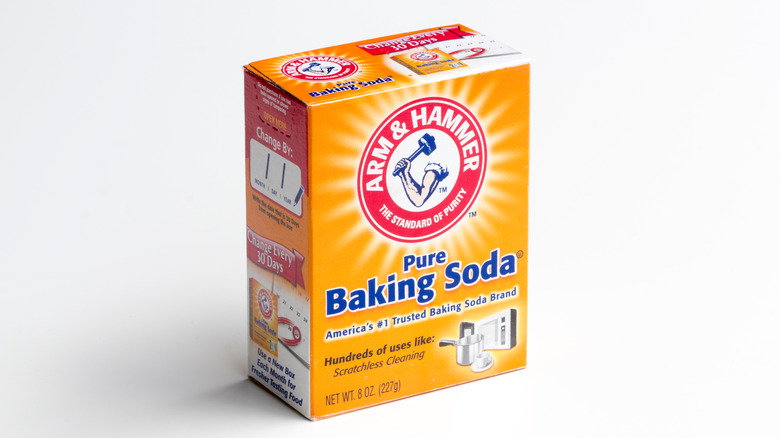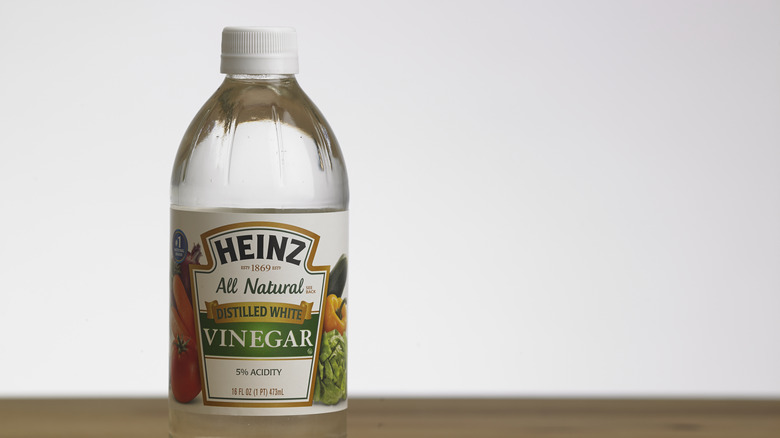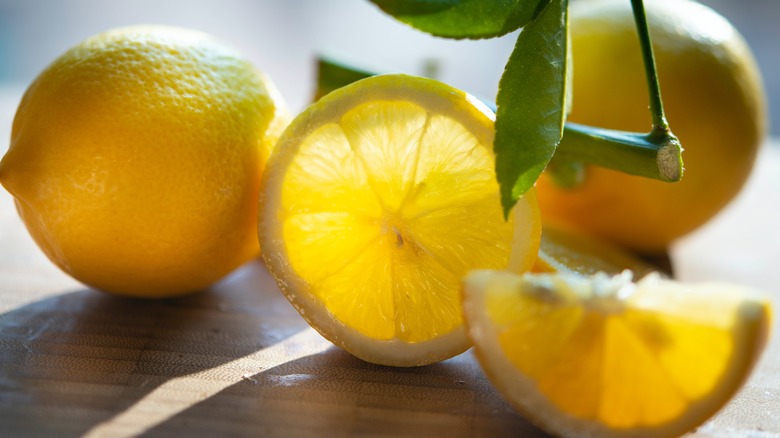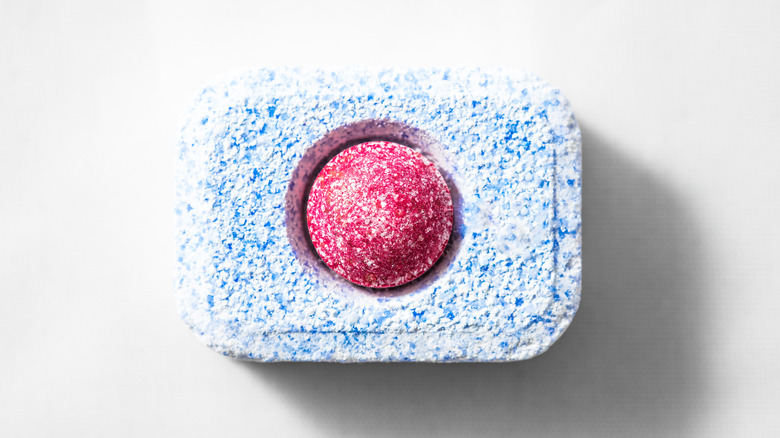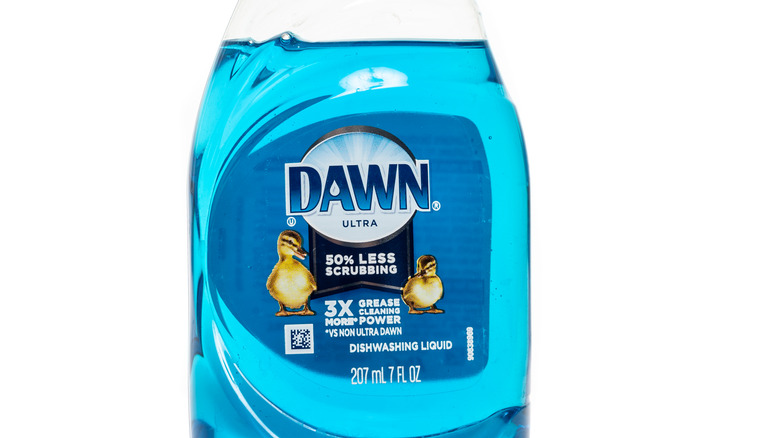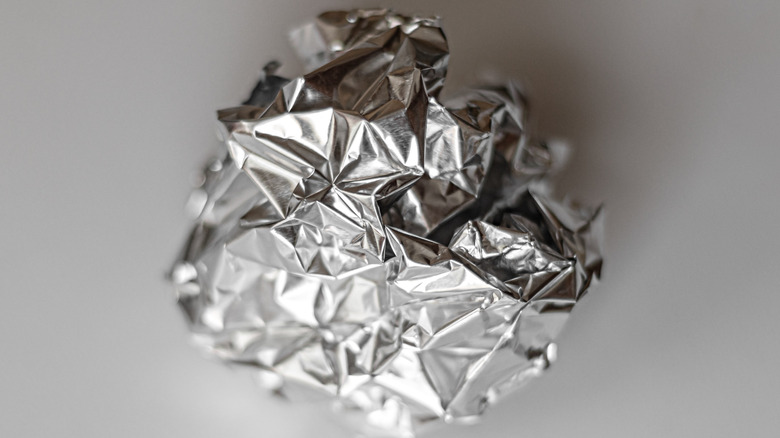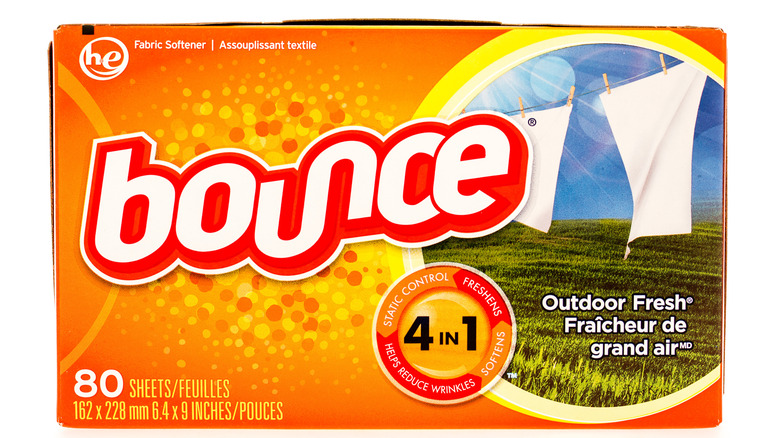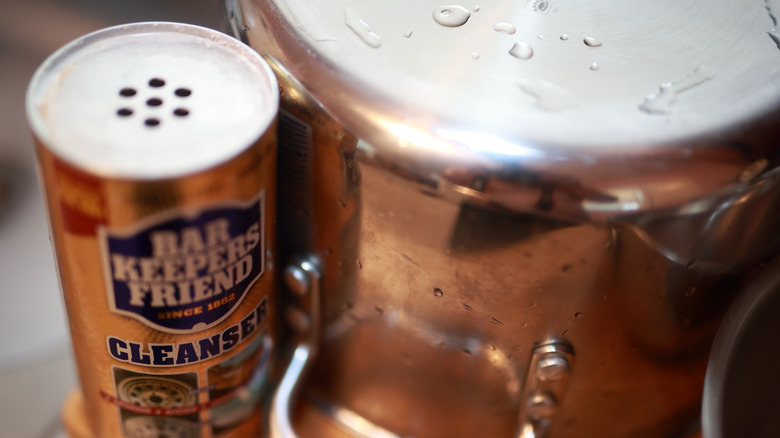How To Successfully Clean Burnt Pots And Pans
It happens to even the most well-seasoned cooks (no pun intended). Pots and pans, both stainless steel and nonstick, can get burnt when the stovetop heat is turned up too high. The damage can be so extreme that it may feel like your favorite pot or pan is ruined for good. Fortunately, there are many methods to get them looking like new again that don't require a whole lot of effort on your part.
HGTV recognizes that commercial cleaners are the popular choice to really get your burnt pots and pans clean again. However, if you don't have any on hand (or don't feel like running to the store), there are many other ways to get the job done with items you likely already have in your kitchen. Even better, these options save you both time and money.
Ahead, you'll find eight simple solutions to restore your burnt pots and pans so they look like they did before the cooking faux pas.
Baking soda and boiling water
To clean a burnt nonstick pot or pan all you need is a bit of baking soda, according to The Spruce. Before attempting this method, be sure to get any excess food out from the bottom by wiping with a soft cloth or paper towel. With any nonstick cookware, you never want to use abrasive or coarse materials, as it can permanently damage the coating.
Once the food has been removed, pour about 1 inch of water into the pot or pan and then add a half cup of baking soda. Place it on the stove and bring to a boil before lowering the temperature and letting it sit for no more than 15 minutes. The baking soda solution shouldn't dry out during this process.
From there, use a tool made of either wood or plastic to get any remaining residue out of the bottom. Then wash the pot or pan like you normally would to thoroughly clean off the baking soda.
Vinegar and baking soda
If you want to clean your stainless steel or cast-iron pots and pans, try this method suggested by Real Simple that adds the element of vinegar (don't use aluminum pots and pans with this solution, as aluminum reacts with vinegar). Pour some white vinegar into the pot or pan and then heat it over the stove. After a few minutes, use a spoon or spatula to scrape anything you can off. Turn off the stove and then create a paste of baking soda and water to scrub away what's left. Wash the pot or pan as you normally would once it's cool.
Apartment Therapy offers a few additional tips for this method. For one, if you don't want the combination of the vinegar and baking soda to create an overpowering reaction, feel free to pour the vinegar out before adding the baking soda in. Secondly, if there are tough stains that are lingering after this process, leave paste made from baking soda and water on the spots for a bit before washing the pot or pan.
Lemon slices
Have extra lemons lying around? Now is the time to put them to good use. According to The Kitchn, slice two to three lemons into fourths and throw them into the burnt pot or pan with a few inches of water. Turn the stove on and wait for the water to boil. Let it continue to boil until you begin to notice the burnt bits rise to the top of the water. This should take anywhere from about five to ten minutes.
Once you're satisfied with how much has been removed, take the pot or pan off of the heat and pour out the water and lemons. Rinse the bottom out and use a scrubbing brush or sponge (depending on the type of cookware) to get any remaining food or burnt pieces off. This method is not only simple, it's also natural and especially helpful if you've just cooked with lemons and have some leftover.
Dishwasher tablet
Using a dishwasher tablet outside of the dishwasher isn't always the first thing that comes to mind. But if it works well to clean your dishes when inside the dishwasher, it makes sense that it would work by hand as well. MyDomaine suggests that this could be the quickest way to clean your burnt pots and pans. So, it's a great option to consider.
First, fill the pot or pan in question with 1 inch of water on the stovetop and turn the temperature on low. When it's slightly warm, remove it from the heat and grab your dishwasher tablet. Remove the wrapper and put some kitchen gloves on to preserve your hands and nails. From here, use the tablet like a sponge and run it along the burnt pieces to remove them. Once you've gotten it all, simply rinse off the pot or pan with some hot water.
Dishwashing detergent
This might seem a bit obvious, but it could be all you need to get the burnt bits off of your pot or pan. It also could be particularly useful if you're tired after a long night of cooking and aren't up for any of these tips and tricks that can take up to 15 minutes. One word of caution before beginning: Avoid using this method on any aluminum pots or pans because, as explained by PureWow, the bleach in the detergent can discolor them.
But if you're using any other type of cookware, all you have to do is place it in the sink and add in a bit of dishwashing detergent or liquid along with hot water. Mix the two together until it's soapy and then let the item soak while you head to bed and let the detergent work its magic. In the morning, use a sponge to clean it as usual.
Aluminum foil
This method, which is about as inexpensive as you can get, is known to be extremely effective. But, it's very important that you don't use it on nonstick pots or pans, as it will most likely scrape the surface. With that said, all you'll need is a bit of aluminum foil and some muscle for this to work.
According to Bob Vila, you should add hot water into the pot or pan. While it's not necessary, it's helpful to add a bit of dishwashing liquid and let it sit for a half hour before moving onto the next step. When you're ready, take a piece of aluminum foil and roll it into a small ball. Scrub the bottom of the pot or pan with your makeshift scrubber until the burned on food begins to loosen and comes off. Then simply wash the item as normal and recycle the aluminum ball.
Dryer sheets
While using dryer sheets might be the most unconventional method on this list, it's been known to get the job done — and with very little elbow grease on your part. You just have to take a walk over to the laundry room for what you need. According to Today, it's likely that the conditioning component of a dryer sheet is what helps soften and dislodge the burnt-on bits.
To start, pour warm water into your pot or pan. Then, add a single, unfolded dryer sheet on top. Either let it stand for up to 15 minutes or, if the damage is extreme, you can let it sit overnight. You'll be amazed at how the dryer sheet works to lift up the food and grease. When you're ready, remove the dryer sheet and rinse out the item. Use a damp sponge to remove any food or grease that is leftover.
Commercial cleaners
When push comes to shove, you may just want to reach for a commercial cleaner, and that's perfectly fine. These are designed specifically for cleaning tough stains such as burnt food. One of the most trusted commercial cleaning products on the market is Bar Keeper's Friend, which is recommended by Better Homes & Gardens. It's important to note that using a commercial cleaner like Bar Keeper's Friend is best used for cleaning stainless steel pots and pans.
First, run the pot or pan under hot water and then dust the powder directly onto the burnt areas. As an aside, you may want to consider wearing kitchen gloves during this process to protect yourself. Let the cleaner sit for a minute, then use a soft cloth or a sponge to begin scrubbing the stains. Run it under hot water again, continuing to scrub any leftover bits. Repeat the process if need be.
